- What Are Sweet Peas?
- Why Grow Sweet Peas in Your Garden?
- Choosing the Right Seeds
- Variety
- Color
- Growing Conditions
- Seed Source
- Considerations for Seed Selection
- Variety
- Growth Habit
- Climate and Growing Conditions
- Quality and Source
- Where to Buy Sweet Pea Seeds
- 1. Online Seed Suppliers
- 2. Local Garden Centers
- 3. Seed Exchanges and Gardening Communities
- 4. Seed Catalogs
- Conclusion
- Preparing Your Garden
- 1. Choose the Right Location
- 2. Clear the Area
- 3. Improve the Soil
- 4. Test the Soil
- 5. Provide Support
- 6. Plan the Planting Layout
- 7. Consider Companion Plants
- 8. Watering and Mulching
- Selecting the Ideal Location
- Sunlight
- Soil Quality
- Wind Protection
- Adequate Space
- Proximity to Water Source
- Preparing the Soil for Sweet Peas
- 1. Choose a Sunny Location
- 2. Clear the Area
- 3. Loosen the Soil
- 4. Amend the Soil
- 5. Test the Soil pH
- 6. Apply Fertilizer
- 7. Water the Soil
- Planting Sweet Pea Seeds
- 1. Choose the Right Time
- 2. Prepare the Soil
- 3. Soak the Seeds
- 4. Plant the Seeds
- 5. Support the Vines
- 6. Water and Mulch
- 7. Maintain Moisture
- 8. Fertilize Regularly
- 9. Monitor for Pests and Diseases
- 10. Harvest Flowers
- When to Plant Sweet Pea Seeds
- Spring Planting
- Fall Planting
- Soaking and Pre-Treatment
- Conclusion
- Questions and Answers:
- Can sweet peas be grown from seed?
- What are the steps to successfully grow sweet peas from seed?
- When is the best time to sow sweet pea seeds?
- How long does it take for sweet pea seeds to germinate?
- Do sweet peas need a lot of sunlight to grow?
- Can sweet peas be grown in containers?
- Videos: How To Grow Peas In Containers – Step By Step From Planting To Harvest
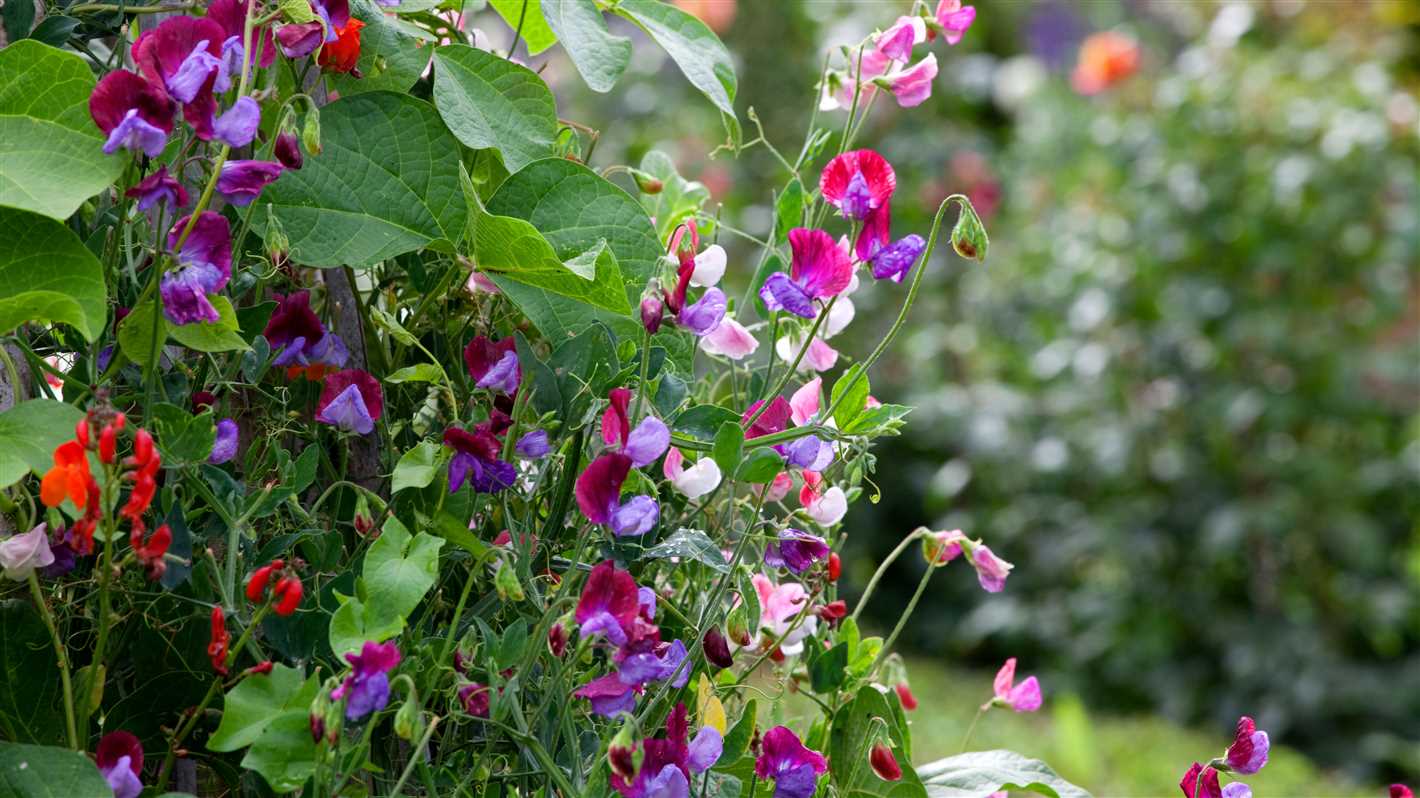
If you’re looking to add a touch of beauty and fragrance to your garden, sweet peas are an excellent choice. These delicate flowers come in a variety of colors and are known for their heavenly scent. Growing sweet peas from seed can be a rewarding and enjoyable experience, but it does require some careful attention and planning.
Choosing the right seeds: When selecting seeds for your sweet peas, it’s important to choose a variety that is suitable for your climate and growing conditions. Some sweet pea varieties prefer cooler temperatures, while others thrive in warmer climates. It’s also a good idea to choose a variety that is known for its strong fragrance and long-lasting blooms.
Preparing the soil: Sweet peas thrive in rich, well-draining soil that is slightly alkaline. Before planting your seeds, prepare the soil by removing any weeds or debris and adding compost or organic matter to improve fertility. It’s also important to ensure that the soil has good drainage to avoid waterlogged roots.
Planting and caring for the seeds: Sweet peas can be sown directly into the ground in early spring or started indoors in late winter. If starting indoors, sow the seeds in pots or trays filled with moist potting soil and keep them in a warm, sunny spot. Once the seedlings have developed their second set of leaves, they can be transplanted into the garden. When planting directly into the ground, sow the seeds about an inch deep and cover them with soil.
Providing support: Sweet peas are climbing plants that require support to grow and thrive. Install a trellis or support system before planting the seeds to provide a structure for the plants to climb on. As the plants grow, gently train them to climb the support by tying them with twine or garden clips. Regularly check and adjust the supports as needed to ensure the plants are well supported.
Watering and fertilizing: Sweet peas require regular watering, especially during dry spells. Water the plants deeply, ensuring that the soil is moist but not waterlogged. Avoid wetting the leaves and flowers, as this can lead to disease. Fertilize the plants every few weeks with a balanced organic fertilizer to promote healthy growth and abundant blooms.
Harvesting the blooms: Sweet peas will start blooming about 8-10 weeks after planting, depending on the variety. Harvest the blooms frequently to encourage more flowers to grow. Cut the stems early in the morning when the plants are well hydrated, and place them in a vase of water immediately to enjoy their beauty and fragrance indoors.
With proper care and attention, growing sweet peas from seed can be a delightful experience that adds color and fragrance to your garden. From choosing the right seeds to providing support and regular care, following these steps will help ensure a successful sweet pea garden.
What Are Sweet Peas?
Sweet peas, scientifically known as Lathyrus odoratus, are flowering plants that belong to the legume family Fabaceae. They are native to the Mediterranean region and have been cultivated for centuries for their beautiful, fragrant flowers.
Sweet peas are climbing annuals that can reach heights of 6 to 8 feet. They have slender, twining stems and delicate tendrils that help them climb and support themselves. The leaves are pinnate and consist of two to four pairs of leaflets.
What makes sweet peas truly special are their flowers. They come in a wide range of colors, including shades of pink, purple, white, red, and blue. The flowers have a distinct sweet fragrance that fills the air, hence the name “sweet peas.” Each stem can produce multiple flowers, making them a popular choice for cut flowers and bouquets.
Sweet peas are not only valued for their beauty and fragrance but also for their ability to attract pollinators like bees and butterflies to the garden. They have long, tubular flowers that are perfect for these insects to access the nectar.
Growing sweet peas from seed is a rewarding experience that allows you to enjoy their beauty and fragrance in your own garden. With the right care and attention, you can have a vibrant display of these charming flowers that will enhance your outdoor space.
Why Grow Sweet Peas in Your Garden?
Sweet peas are beautiful and fragrant flowers that can add a touch of charm to any garden. Here are a few reasons why you should consider growing sweet peas in your garden:
- Stunning Colors: Sweet peas come in a wide range of vibrant colors, including shades of pink, purple, red, blue, and white. Their colorful blooms can brighten up any garden and create a visually appealing display.
- Fragrant Scent: One of the greatest attractions of sweet peas is their delightful fragrance. Their sweet and intoxicating scent can fill the air and create a pleasant atmosphere in your garden.
- Climbing Habit: Sweet peas are climbing plants that can easily grow on trellises, fences, or other vertical structures. They can add vertical interest to your garden and provide a beautiful backdrop for other plants.
- Cut Flowers: Sweet peas are often grown for their cut flowers. Their long stems make them ideal for floral arrangements and bouquets. You can bring the beauty and fragrance of sweet peas indoors and enjoy them in vases or containers.
- Easy to Grow: Sweet peas are relatively easy to grow from seed, making them a great choice for beginner gardeners. With proper care and attention, you can enjoy a bountiful display of sweet peas in your garden.
If you want to enhance the beauty and fragrance of your garden, consider growing sweet peas. They are versatile, easy to grow, and can bring a touch of elegance to any outdoor space.
Choosing the Right Seeds
When it comes to growing sweet peas from seed, choosing the right seeds is crucial for a successful garden. Here are a few factors to consider when selecting your sweet pea seeds:
Variety
There are many different varieties of sweet peas to choose from, each with its own unique characteristics. Some varieties may have a more intense fragrance, while others may have larger or smaller blooms. Consider what you want your sweet pea garden to look and smell like, and choose a variety that suits your preferences.
Color
Sweet peas come in a wide range of colors, including shades of pink, purple, blue, red, and white. Think about the color scheme of your garden and select seeds that will complement the other plants and flowers you have. You can also mix and match different colors to create a vibrant and colorful display.
Growing Conditions
Be sure to choose sweet pea seeds that are well-suited for your growing conditions. Consider factors such as the amount of sunlight your garden receives, the soil type, and the climate in your region. Some sweet pea varieties may perform better in cooler climates, while others may be more tolerant of heat and drought.
Seed Source
It’s important to purchase your sweet pea seeds from a reputable source. Look for seeds that have been tested for quality and germination rate. You may also want to consider purchasing organic or heirloom seeds if sustainability and biodiversity are important to you.
By selecting the right sweet pea seeds, you’ll be well on your way to a beautiful and successful garden. Take the time to research and choose your seeds carefully, and you’ll be rewarded with a stunning display of fragrant blooms.
Considerations for Seed Selection
When it comes to growing sweet peas from seeds, selecting the right seeds is crucial for a successful garden. Here are some important considerations to keep in mind when choosing your sweet pea seeds:
Variety
- Fragrance: Consider whether you want your sweet peas to have a strong fragrance or a milder scent. Some varieties are known for their intense fragrance, while others have a more subtle scent.
- Color: Sweet peas come in a wide range of colors, including shades of pink, purple, blue, and white. Decide on the color palette you prefer and select seeds accordingly.
- Blooming time: Sweet peas can have different blooming times, so choose seeds that align with the specific blooming period you desire in your garden.
Growth Habit
Sweet peas can have different growth habits, which can affect how they look and how you need to support them in your garden.
- Height: Some varieties of sweet peas can grow quite tall, reaching heights of up to 6 feet or more, while others stay more compact. Consider the available space in your garden and choose the appropriate height for your needs.
- Vining or bushy: Decide whether you prefer vining sweet peas that require trellises or other supports, or bushier varieties that remain more compact and don’t require as much support.
Climate and Growing Conditions
It’s important to choose sweet pea seeds that are suitable for your specific climate and growing conditions.
- Frost tolerance: If you live in an area with cool springs and late frosts, consider choosing sweet pea varieties that are frost-tolerant.
- Heat tolerance: If you live in a hot climate, select sweet pea varieties that can tolerate high temperatures without wilting or becoming stressed.
- Soil preferences: Sweet peas prefer well-draining soil with a pH level around neutral. Take into account your soil type and adjust your seed selection accordingly.
Quality and Source
Lastly, make sure to source your sweet pea seeds from a reputable supplier to ensure their quality and viability.
- Seed packet information: Read the information on the seed packet to check for details such as the date of harvest, germination rate, and any specific growing instructions.
- Reviews and recommendations: Check online reviews or ask fellow gardeners for recommendations on good seed suppliers.
By considering these factors, you can choose the best sweet pea seeds for your garden and set yourself up for a successful and beautiful display of sweet peas in bloom.
Where to Buy Sweet Pea Seeds
There are several options for purchasing sweet pea seeds, both online and in-store. Here are some popular places to buy sweet pea seeds:
1. Online Seed Suppliers
- Seeds of Change: This online retailer offers a wide variety of organic sweet pea seeds. They prioritize sustainable practices and provide detailed product descriptions to help you choose the perfect seeds for your garden.
- Johnny’s Selected Seeds: Known for their high-quality seeds, Johnny’s Selected Seeds offers a selection of sweet pea varieties. They also provide helpful customer reviews and growing tips.
- Burpee: Burpee is a well-known seed supplier that offers a range of sweet pea seeds. Their website is easy to navigate, and they provide information on each variety’s growth habits and preferred growing conditions.
2. Local Garden Centers
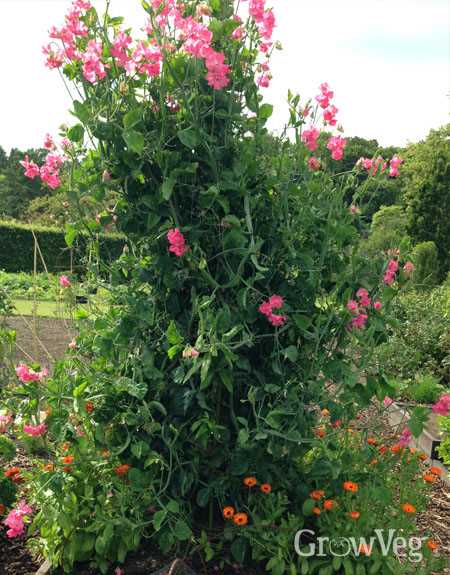

Many local garden centers carry sweet pea seeds, especially during the spring planting season. Visit your nearby garden center and browse their selection of seeds. You can often find unique varieties that are well-suited to your specific climate and growing conditions.
3. Seed Exchanges and Gardening Communities
Consider joining a seed exchange or gardening community in your area. These groups often offer opportunities to trade or share seeds, including sweet pea varieties. Not only can you find unique seeds, but you can also connect with fellow gardeners and gain valuable insights and advice.
4. Seed Catalogs
Many seed suppliers produce catalogs that you can request to be sent to your home. These catalogs often feature extensive selections of sweet pea seeds, complete with detailed descriptions and growing tips. Take your time to browse through the catalogs and choose the varieties that appeal to you the most.
Conclusion
With the availability of various online seed suppliers, local garden centers, seed exchanges, and seed catalogs, finding sweet pea seeds is easier than ever. Consider your specific gardening needs and preferences, and choose a reputable source that offers the varieties you desire. Happy gardening!
Preparing Your Garden
Before planting your sweet peas, it is important to prepare your garden to ensure optimal growth and success. Follow these steps to create the ideal environment for your sweet peas:
1. Choose the Right Location
Select a location in your garden that receives at least six hours of direct sunlight per day. Sweet peas thrive in full sun but can tolerate partial shade. Avoid areas with excessive shade as it can lead to poor growth and fewer blooms.
2. Clear the Area
Remove any weeds, rocks, or debris from the chosen planting site. Weeds can compete with sweet peas for nutrients and water, hindering their growth. Clearing the area will also help prevent fungal diseases and pests.
3. Improve the Soil
Ensure that your soil is loose, well-draining, and rich in organic matter. Sweet peas prefer slightly alkaline soil with a pH range of 6.0 to 7.5. If necessary, amend the soil with compost or well-rotted manure to improve its fertility and drainage.
4. Test the Soil
Before planting, it is recommended to test the soil to determine its nutrient levels. You can use a home soil testing kit or send a sample to a professional lab for analysis. Based on the results, you may need to add specific fertilizers or nutrients to optimize the soil conditions for sweet peas.
5. Provide Support
Sweet peas are climbing plants and require support to grow upright. Install a trellis, fence, or netting system before planting to provide the necessary support. You can also use bamboo stakes or other materials to create a framework for the sweet peas to climb on.
6. Plan the Planting Layout
Determine the spacing and arrangement of the sweet peas in your garden. They should be planted in rows or clusters to ensure proper air circulation and prevent overcrowding. Leave enough space between plants to allow for their growth and ease of harvest.
7. Consider Companion Plants
Sweet peas can benefit from being planted alongside certain companion plants. Marigolds, lavender, and nasturtiums are known to deter pests and attract beneficial insects. Avoid planting sweet peas near onions, garlic, or shallots, as they may interfere with their growth.
8. Watering and Mulching
After planting, provide consistent moisture to help the sweet peas establish their roots. Water deeply and evenly, ensuring that the soil remains moist but not waterlogged. Apply a layer of mulch around the plants to help retain moisture, suppress weed growth, and maintain a more stable soil temperature.
Following these steps will help prepare your garden for successful sweet pea growth, ensuring beautiful blooms and a bountiful harvest.
Selecting the Ideal Location
When it comes to growing sweet peas from seed, selecting the right location is crucial for their success. Sweet peas thrive in bright sunlight, but they can also tolerate partial shade. Here are a few factors to consider when choosing the ideal location:
Sunlight
Sweet peas require at least 6 hours of direct sunlight each day to grow and flower properly. Therefore, it is important to choose a location that receives adequate sunlight. If you don’t have a spot that gets full sun, try selecting an area with morning sun and afternoon shade, as sweet peas tend to prefer cooler temperatures in the afternoon.
Soil Quality
The soil quality is another important factor to consider. Sweet peas prefer well-draining soil that is rich in organic matter. Before planting, amend the soil with compost or well-rotted manure to improve its fertility and drainage. Avoid heavy clay soils, as they can retain too much moisture and cause root rot.
Wind Protection
Consider the windy conditions in your garden when selecting a location for sweet peas. Strong winds can damage the delicate vines and make it difficult for them to grow upright. To protect your sweet peas from wind, you can choose a location near a fence, trellis, or other structures that provide some wind breakage.
Adequate Space
Sweet peas are vigorous climbers and can grow up to 6 feet tall. Make sure to select a location that has enough vertical space for the vines to grow. You can provide support for the plants by installing a trellis, bamboo canes, or a garden netting for them to climb on.
Proximity to Water Source
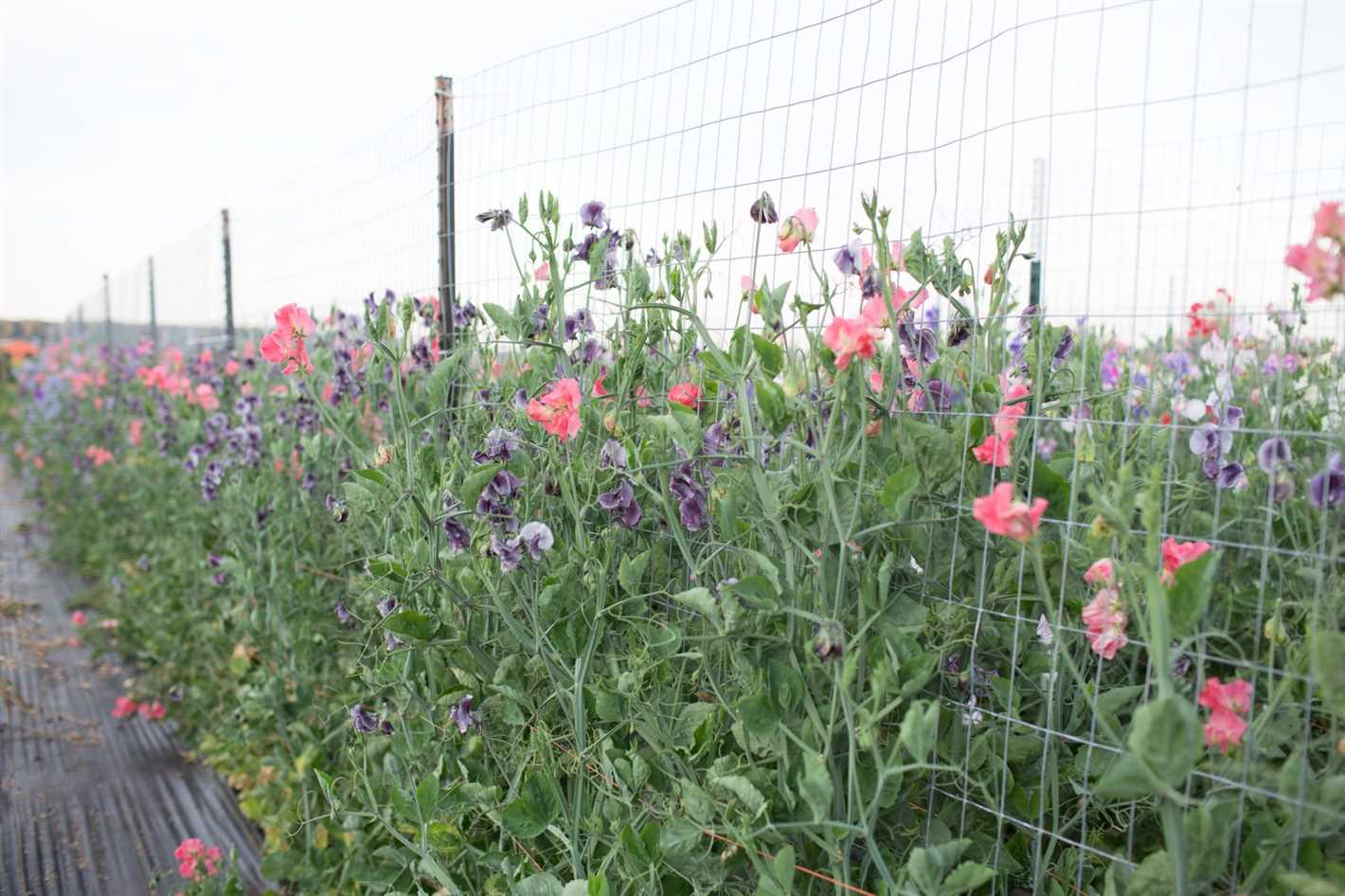

Sweet peas require regular watering to keep the soil consistently moist, especially during dry periods. Choose a location that is close to a water source, such as a hose or irrigation system, to make it easier to water your sweet peas regularly.
By considering these factors and selecting the ideal location for your sweet peas, you will give them the best chance of thriving and producing beautiful flowers in your garden.
Preparing the Soil for Sweet Peas
Before planting sweet peas in your garden, it is important to prepare the soil to provide the best conditions for their growth. Proper soil preparation can help ensure healthy plants and abundant blooms.
1. Choose a Sunny Location
Sweet peas thrive in full sun, so choose a location in your garden that receives at least six hours of direct sunlight each day. This will help the plants grow strong and produce more flowers.
2. Clear the Area
Before preparing the soil, clear the area of any weeds, rocks, or debris. This will ensure that the sweet peas have access to all the nutrients and water in the soil.
3. Loosen the Soil
Using a garden fork or tiller, loosen the soil to a depth of about 12 inches. This will improve drainage and allow the sweet pea roots to penetrate the soil easily.
4. Amend the Soil
Add organic matter, such as compost or well-rotted manure, to the soil. This will enrich the soil with nutrients and improve its texture. Mix the organic matter thoroughly into the loosened soil.
5. Test the Soil pH
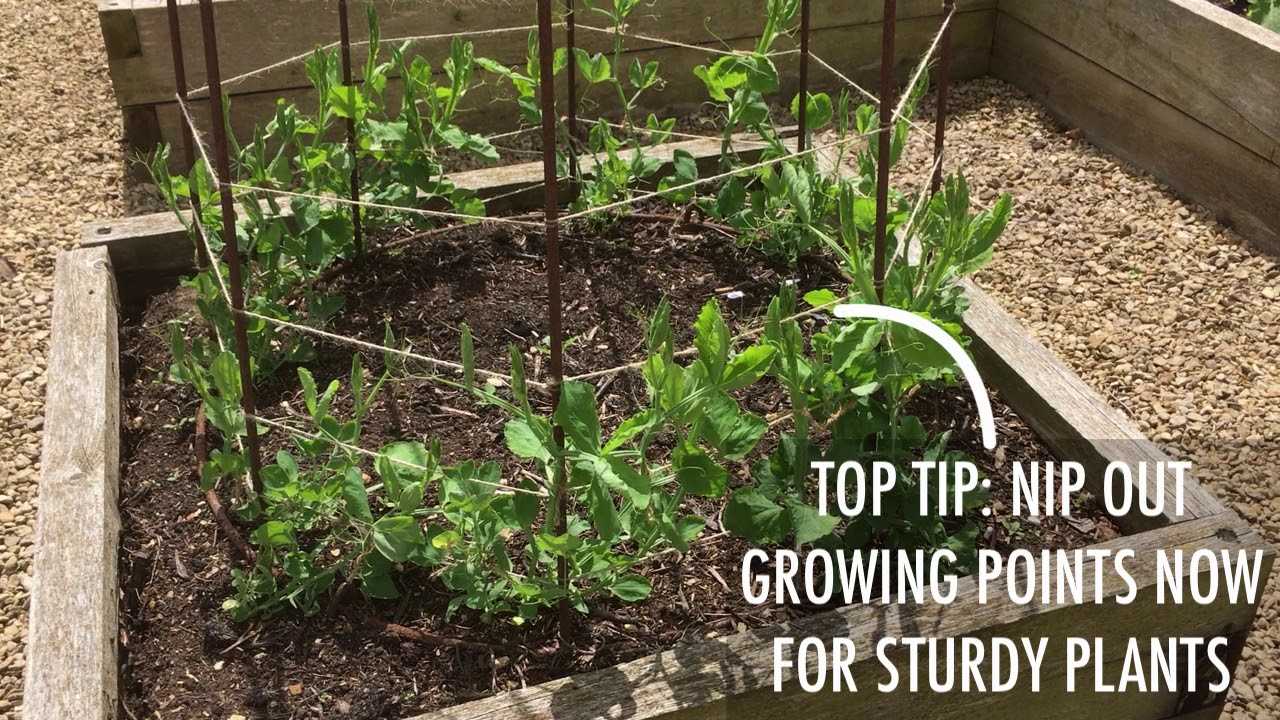

Sweet peas prefer a slightly acidic soil with a pH of around 6.0 to 7.0. Use a soil testing kit to determine the pH of your soil. If the pH is too acidic or alkaline, you can adjust it by adding lime to raise the pH or sulfur to lower it.
6. Apply Fertilizer
Before planting sweet peas, apply a balanced fertilizer, such as a 10-10-10 or 14-14-14 NPK (nitrogen, phosphorus, and potassium) fertilizer, according to the instructions on the package. This will provide the plants with the essential nutrients they need for healthy growth.
7. Water the Soil
Before planting the sweet pea seeds, thoroughly water the prepared soil. This will help settle the soil and create a favorable environment for seed germination.
By following these steps to prepare the soil, you will create optimal conditions for growing sweet peas from seed in your garden.
Planting Sweet Pea Seeds
Planting sweet pea seeds is a simple and rewarding process that can result in beautiful, fragrant flowers in your garden. Follow these steps to successfully grow sweet peas from seed:
1. Choose the Right Time
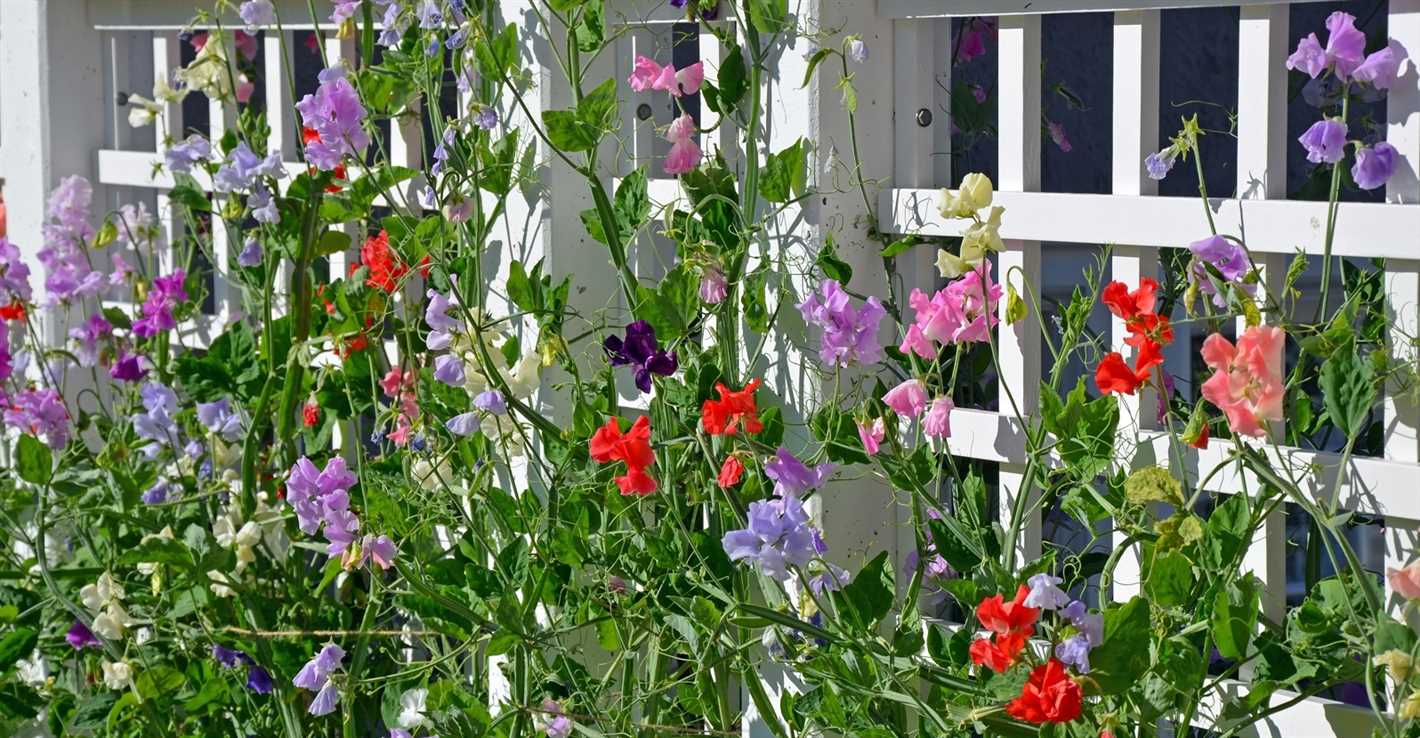

Sweet pea seeds should be planted in early spring, as soon as the soil can be worked. They prefer cooler temperatures and can withstand some frost.
2. Prepare the Soil
Prepare a sunny spot in your garden with well-draining soil. Sweet peas thrive in sandy or loamy soil that is slightly alkaline.
3. Soak the Seeds
Before planting, soak the sweet pea seeds in water overnight. This will help to soften the seed coat and promote faster germination.
4. Plant the Seeds
Plant the sweet pea seeds about 2 inches deep, spacing them 6 inches apart. If you’re planting multiple rows, keep a distance of at least 12 inches between rows.
5. Support the Vines
As sweet peas are climbing plants, they need support to grow properly. Install trellises or stakes near the planting area to provide a structure for the vines to climb.
6. Water and Mulch
Water the newly planted seeds thoroughly and apply a layer of mulch around the base of the plants. This will help retain moisture in the soil and suppress weed growth.
7. Maintain Moisture
Keep the soil consistently moist but not waterlogged. Water the plants regularly, especially during dry spells, to ensure healthy growth and flower production.
8. Fertilize Regularly


Feed your sweet peas with a balanced fertilizer every few weeks. This will provide them with the necessary nutrients for strong growth and abundant blooms.
9. Monitor for Pests and Diseases
Keep an eye out for common pests such as aphids and slugs, as well as diseases like powdery mildew. Treat any issues promptly to prevent damage to your sweet pea plants.
10. Harvest Flowers
Once your sweet peas begin to bloom, you can start harvesting the flowers. Cut them early in the morning when they are fully open for the longest vase life.
By following these steps, you’ll be well on your way to successfully growing sweet peas from seed and enjoying their lovely blooms all season long.
When to Plant Sweet Pea Seeds
Planting sweet pea seeds at the right time is crucial for their successful growth. Sweet peas are cool-season flowers, so it’s important to plant them at the right time to ensure they thrive in your garden.
Spring Planting
Sweet pea seeds can be planted in spring, as soon as the soil is workable and the threat of frost has passed. Depending on your location, this is typically in late March or early April.
It’s important to note that sweet peas prefer cool temperatures, so if you live in a hot climate, it’s best to plant them at the beginning of the spring season to avoid hot summer temperatures. This will ensure that the plants have enough time to grow and bloom before the weather gets too warm.
Fall Planting
In some areas, sweet pea seeds can also be planted in the fall for early spring blooms. This is called fall sowing. The seeds are sown in late autumn, before the ground freezes. They will remain dormant during the winter and start growing as soon as the weather warms up in spring.
Fall planting is a great option for gardeners who want to enjoy sweet pea blooms as early as possible in the spring season. However, it’s important to note that fall sowing may not be suitable for all climates, as the seeds need a period of cold stratification (exposure to cold temperatures) to germinate successfully. Make sure to research your specific climate and growing conditions before attempting fall sowing.
Soaking and Pre-Treatment
Before planting sweet pea seeds, it’s a good idea to soak them overnight to speed up germination. This can be done by placing the seeds in a bowl of water and allowing them to soak for 12-24 hours. After soaking, the seeds can be planted directly in the garden or started indoors in pots.
Some gardeners also recommend nicking or scarifying the seed coats of sweet peas with a file or sandpaper to help with germination. This can be done by gently rubbing the surface of the seed coat to create a small abrasion.
Conclusion
Knowing when to plant sweet pea seeds is essential for a successful garden. Whether you choose to plant them in spring for summer blooms or in fall for early spring flowers, providing the right growing conditions and pre-treatment can help ensure beautiful and fragrant sweet pea blooms in your garden.
Questions and Answers:
Can sweet peas be grown from seed?
Yes, sweet peas can be successfully grown from seed in your garden.
What are the steps to successfully grow sweet peas from seed?
To successfully grow sweet peas from seed, you need to start by preparing the soil, soaking the seeds overnight, sowing the seeds, providing support, watering regularly, and removing any weeds or pests.
When is the best time to sow sweet pea seeds?
The best time to sow sweet pea seeds is in early spring, when the soil starts to warm up and the risk of frost has passed.
How long does it take for sweet pea seeds to germinate?
Sweet pea seeds usually take around 10 to 14 days to germinate, but it can vary depending on the temperature and conditions.
Do sweet peas need a lot of sunlight to grow?
Yes, sweet peas need at least 6 hours of direct sunlight per day to grow and flower properly.
Can sweet peas be grown in containers?
Yes, sweet peas can be grown in containers as long as the containers are deep enough to accommodate their root system and provide adequate drainage.







